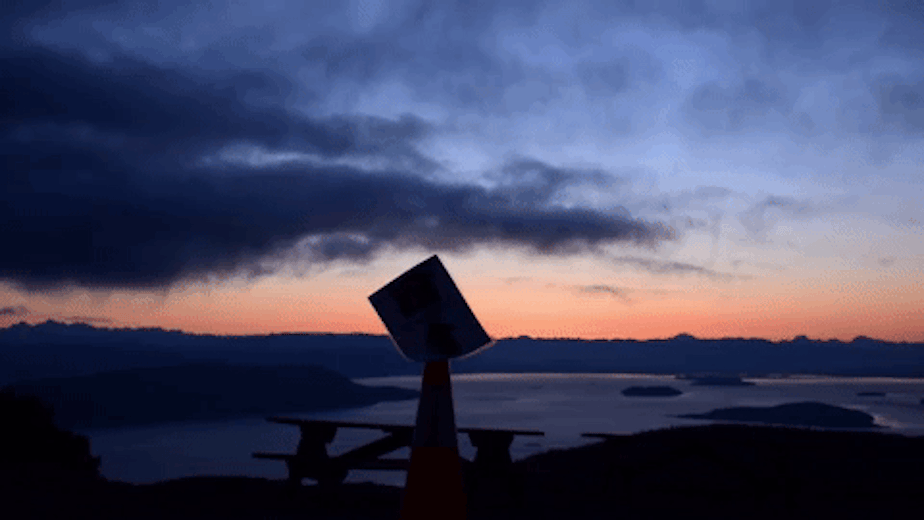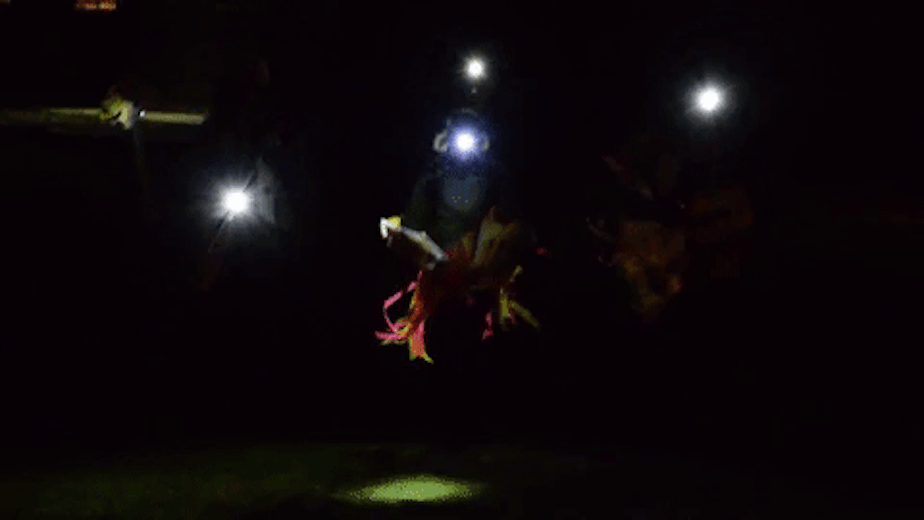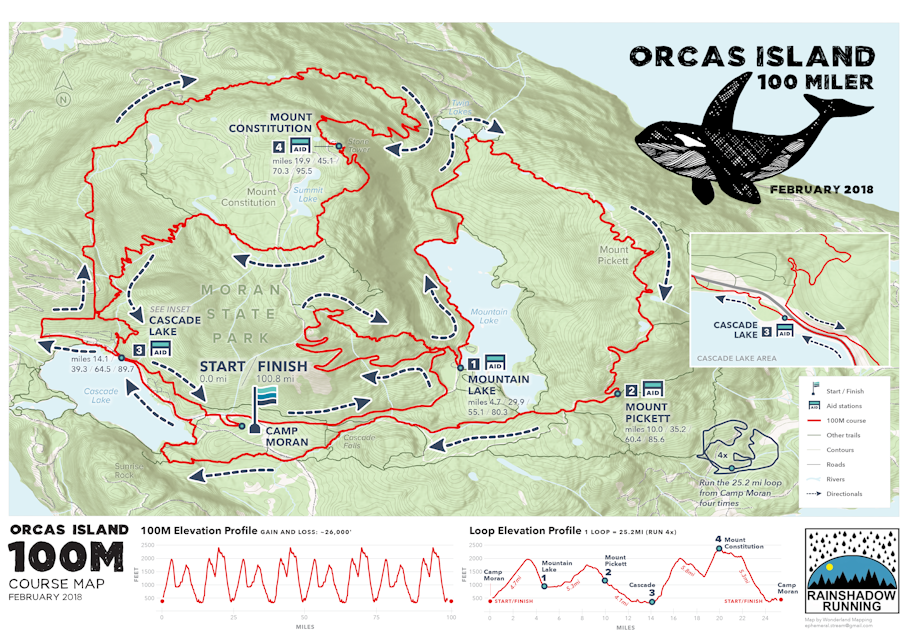What 100 miles of misery looks like

Northwesterners have a reputation for loving the outdoors and tirelessly lapping urban lakes. There are a few who push the "active lifestyle" to a cold, dark extreme.
Over a February weekend, 69 runners survived macerated feet, busted knees and mild hypothermia to finish a 100-mile trail run on Orcas Island in less than 36 hours.
"You go and touch a dark place," said Joel Ballezza.
It was about 7 a.m. on a Friday. He was sitting in the lodge at Camp Moran on Orcas Island an hour before the start of the race.
"Doing this type of race you get to a place where you're real ragged. And there's something that entices me from an evolutionary, human standpoint of going to something so dark," Ballezza said.
He didn't have a time he was trying to beat except 36 hour cut-off. Mostly, he was imagining crossing the finish line to earn a belt buckle, slip on some flip flops and hug some friends.
But first, those 100 miles.
The course weaves its way around Moran State Park in a 25.2 mile loop that runners complete four times.
This is a trail race, it climbs and dips for a total of 26,000 feet of elevation gain (and descent). For perspective, that's like running up and down Mount Si — 8 times.
For fun.
The most dreaded section is the powerline. From Cascade Lake the trail climbs for nearly six miles, finishing with a grueling set of switch backs to the top of Mount Constitution.
For extra challenge, they can then participate in the Tower Club. On each loop, they hoof up the spiral staircase to the top of a watchtower to punch their race numbers. Those that complete all four of this extra punishment get a t-shirt and bragging rights at the finish line.
The first loop was in daylight, a fairly lovely day. Mist moved through the evergreen trees until it burned off in the afternoon. Runners arrived at Constitution cheerful.
But it's winter, so there was a long 14 hours of darkness to contend with. Climbing each time to the top of Constitution brought a marked drop in temperature. The temperature dropped well below freezing once the sun went down.
Overnight runners staggered into the aid station tent, taking what comfort they could from heat lamps and big pots of soup warmed on camp stoves. Volunteers huddled around fire pits outside, watching through the night for headlamps bobbing up the hill. Each one was greeted with cheers and cowbells.
The toll was steep. According to posted results, 22 people did not finish the race. Of those, 17 removed themselves in the early morning hours on Saturday.
One who didn't was Gabe Joyes of Wyoming, who finished first in just under 20 hours, rolling in at 3:39 a.m. on Saturday.
Ballezza crossed the finish line at 6:59 p.m., after running 35 hours.
As the headlamps from the last runners were spotted on the road into Camp Moran, the lodge spilled out to the finish line: competitors, family, friends and volunteers gathered to cheer the final exhausted ghost-like runners across, just 15 minutes before the final cutoff at 8 p.m.

A well earned beer in hand, Ballezza reflected on the previous two days.
Ballezza said the trail running community he has found in the Northwest is "one of the most loving groups of people I've ever been exposed to."
But this race was "type 3 fun."
A quick primer: Type 1 fun is something that is just fun. Type 2 is something that isn't fun at the time but is great when it's over, for example a tough hike that has an amazing view.
"Type 3 fun is so traumatic that you can't think about it for weeks or months in the future," he said with a chuckle. "I'll never be running the Orcas 100 mile race again ... I think I've learned as much as I need to learn."
Editorial note: The author of this story was a first-aid volunteer at this event.




